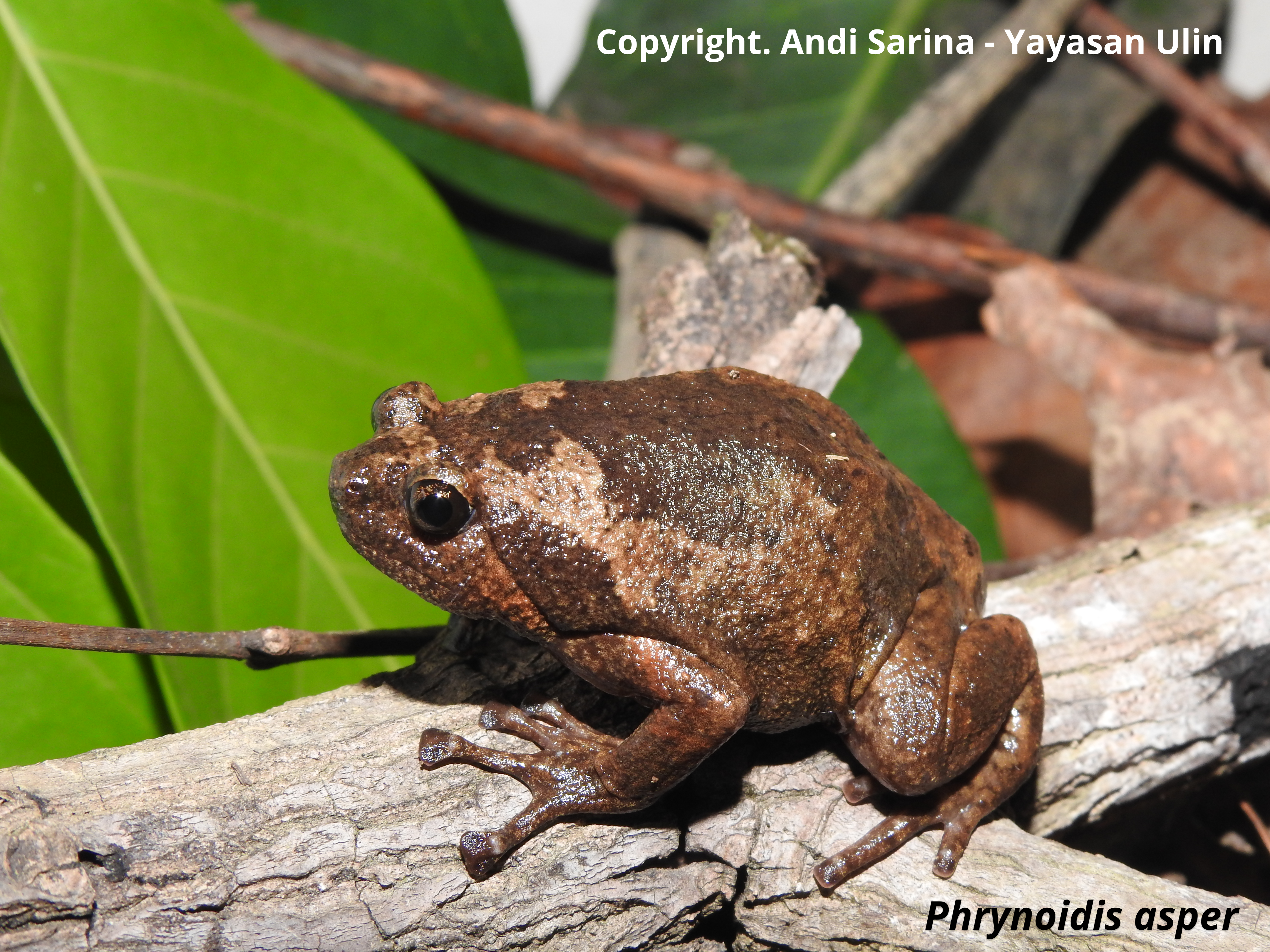Status Konservasi : Least Concern (LC)
Status Perlindungan : Tidak dilindungi (TD)
Status Perdagangan : Not Listed (NL)
Kaloula balaeta
(Müller, 1833)
Microhylidae
Nama : Belentung/Brown bullfrog
Deskripsi : Katak yang memiliki tubuh bantat dan membulat dengan tungkai belakang yang pendek dan tebal serta moncong yang pendek. Ujung jari melebar dan tumpul. memiliki ukuran tubuh yang kecil hingga sedang, dengan panjang sekitar 3-5 cm. telapak kaki dengan sepasang tonjolan atau flensa yang menonjol di pangkal jari kaki. Tubuhnya cenderung berwarna coklat atau keabu-abuan dengan corak yang bervariasi.
Habitat : Belentung hidup di habitat hutan lembab, terutama di daerah dataran rendah. Mereka juga ditemukan di daerah yang terganggu akibat aktivitas manusia. Di Mesangat lebih sering dijumpai di Mesangat Ilir yang berupa hutan sekunder, di celah ranting pohon atau serasah.
Sebaran : Spesies ini tersebar di beberapa wilayah, termasuk India, Borneo, Semenanjung Indochina, Jawa, Semenanjung Malaya, dan Filipina. Mereka hidup di hutan dataran rendah dan toleran terhadap habitat yang terganggu.

